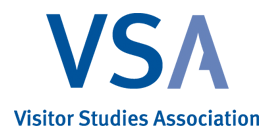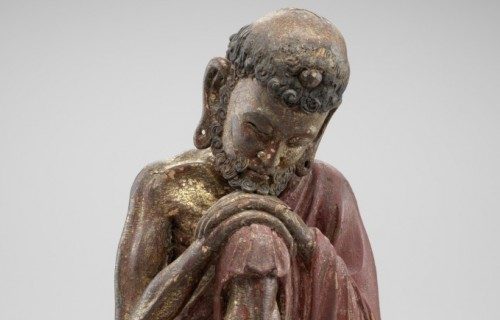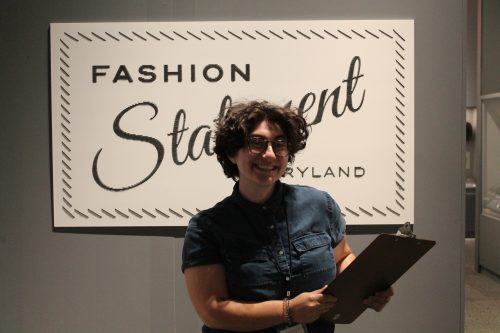How do we know what we know?

This post was written by JMM School Program Coordinator Paige Woodhouse. To read more posts from Paige, click here!
How do we know what we know?
This is a big question. It’s bigger than big. It’s enormous.
So how do you tackle a question like that? A conference seems like a logical place to start. In July, the Visitor Studies Association (VSA) hosted its annual conference in Detroit Michigan titled “Ways of Knowing.” This question, “How do we know what we know?” was the question that the keynote speaker, Dr. Katrina Bledsoe, opened the conference with before diving into contemporary thoughts in the field of evaluation.
Conferences are exciting places. They harvest intriguing questions and ignite new ideas. They are a place to share success stories and struggles that happened along the way. They are places for learning. While I couldn’t attend The VSA conference in person, thanks to a new green initiative by the VSA, I attended their first-ever virtual conference. Like all conferences, there was more discussed than could possibly be written about in one blog post.

To learn from other organizations about their applications of evaluation, you have to learn about the projects they evaluated. I heard from lots of organizations that have recently undertaken interesting projects (Along with the great ways they are using evaluation to learn from them). Here’s are two examples:
“Studying Touch as a Way of Knowing in the Art Exhibition” researched how touch can be a method of interpretation for visitors interacting with artwork, specifically sculpture. The project monitored visitors’ encounters (through video recording) with artwork in the exhibit Evighetens Form (Eternity’s Form) by the National Museum of Art, Architecture and Design in Oslo, Norway (2016 – 2019). This project added to previous research on multi-sensory meaning-making processes. Listening to the findings of their study, I particularly enjoyed an unexpected outcome they had – visitors would going beyond gentle touching of the sculptures at times and knock on the sculptures for solidity, determining the material, and the sound that was produced.
Dr. Navaz DBhavnagri from Wayne State University spoke about “Using Museums to Promote Cultural Identity Among Yemeni Students.” This project explored how museums are places that can promote and enhance cultural identity. Working with Muslim Yemeni immigrant and refugee students across multiple visits to the Detroit Institute of Arts, as well as pre-visit and post-visit sessions, students were encouraged to make connections and express their cultural identity. Before visiting the Museum, students did a self-report on what they know and what they wanted to know. Visits to the Museum progressed with different activities. First, they went and took pictures throughout the exhibit writing comments back in the classroom about their photos and how they connected to what they took pictures of. This visit introduced students to the museum environment. Their second visit was a scavenger hunt to encourage more focused engagement with the exhibit. Their third visit encouraged them to select an object to sketch. This object needed to relate to their cultural identity. They needed to think about why they chose that object. What special meaning did it have? How was it connected to their cultural identity? This resulted in a more complex reflection and the students creating an intersection between their personal life and their cultural identity. After each visit, students would debrief their experience. They created art projects that integrated their knowledge. They considered what they learned and what new questions they have now. During this year-long projects, these students were also learning English, so translators were critical to assisting the project. At the end of the project, students presented their object and story to other students and teachers outside of their class – sharing not only their cultural identity, but their new language skills. All the materials produced through the project (photos taken with comments, collages, sketches, reflections, and presentations) were used to evaluate the project. Students moved beyond seeing the objects as “just old” to how they overlap with their own lives.

While each speaker highlighted a specific project, throughout the entire conference the theme of equity was present. How do we promote equitable evaluation? Equity, in the simplest of definitions, means fair access. Each person has access regardless of economic resources or personal traits. Every person has the right to be given equal treatment by the system.
Evaluation is often thought of as being objective. But we need to consider the ways our methodologies are shaped by underlying values. We need to consider different cultural and historical views. We need to make our research findings accessible. While measuring if the goals of a project are being met, we need to consider if the project developed in a culturally responsive way? Whose reality are we representing? Whose voice? Whose experiences?
The Detroit Zoo wanted to engage with audiences that weren’t coming to the zoo (even when offered free admission). They wanted to work with individuals who found themselves homeless and therefore needed to think about the barriers that were preventing people from visiting. When speaking about their project and evaluation, they said that evaluation for their team at the Detroit Zoo means continuously asking, “are we valuable? What is valuable about what we are doing?” The team constantly looks at communities in their neighborhood and asking who are the voices that they don’t reach and what do those communities need?
So, how do we know what we know?
We evaluate. And this takes many forms at JMM. Evaluation is not a one-size-fits-all tool. Especially when thinking about how to be equitable during the process. For the big picture, we want to make sure that what we are doing is valuable. That all our exhibits and programs reflect our mission. We seek to learn about our impact and the quality of experience we offer.
Evaluation can come to us informally through conversations, emails, and phone calls. For projects, (whether it is a public program, school group, or exhibit) we try to make evaluation part of the process.

Recently, JMM’s Visitor Services Coordinator, Talia, shared how our FY2019 visitor numbers are one way that we evaluate our success. We also evaluate using surveys after public programs, or post-it notes with school groups and by observation. This summer our interns have been conducting surveys for our Fashion Statement exhibit. We are interested to see if visitors are making connections to the learning objectives we set out for the exhibit. Or, as I mentioned previously, what unexpected outcomes we may find.
So when our interns and staff are in the orientation space with clipboards asking if you would take a few minutes to fill out a form, or chat with them about your experiences, it is not just to collect data that will sit on a shelf with a checkmark beside it. It is because we genuinely want to know about you, what brought you here, how you did (or did not) connect with our exhibits. Your answers inform our decisions. We learn from them. They help us find ways so that you, the visitor, can “find yourself here.”
Conferences are inspiring. I am positive that the things I learned will trickle into projects at JMM. You can read the abstracts from all the VSA conference sessions here.
